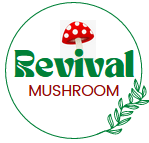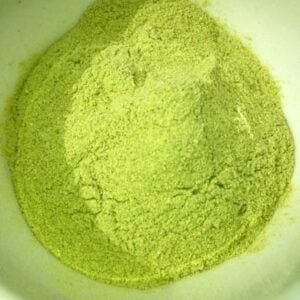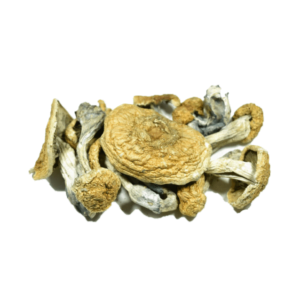Description
Buy Mescaline Powder Online
Mescaline Powder for sale Online. Mescaline is a psychedelic hallucinogen obtained from the small, spineless cactus Peyote (Lophophora williamsi), the San Pedro cactus, Peruvian torch cactus, and other mescaline-containing cacti. It is also found in certain members of the Fabaceae (bean family) and is produced synthetically.
People have used hallucinogens for hundreds of years, mostly for religious rituals or ceremonies. From the earliest recorded time, peyote has been used by natives in northern Mexico and the southwestern United States as a part of traditional religious rites. Mescaline leads to rich visual hallucinations which were important to the native peyote cults. It has an effect that is similar to LSD or psilocybin (magic mushrooms), other hallucinogenic drugs.
Mescaline dose
- Threshold dose: 100-150 mg
- Low dose: 100-200 mg
- Common dose: 200 – 300 mg
- Strong dose: 300 – 500 mg
- Heavy dose: 500-700+mg
The crown of a cactus comprises of disc-shaped buttons that are harvested from the plant’s roots and then dried. Typically, these buttons are chewed or soaked in water to create an intoxicating tea. It may be ingested raw or dry, but has a bitter flavor. In addition to being made into powder for oral capsules, the hallucinogen may also be smoked with marijuana and tobacco. The hallucinogenic dosage is around 0.3 to 0.5 grams (equal to approximately 5 grams of dried peyote) and its effects last approximately 12 hours. However, different amounts may have varying effects on individuals, and doses taken from plants might vary significantly.
Mescaline is typically used as a recreational drug, while it is also included into many forms of meditation and psychedelic treatment. It is classed as a Schedule I narcotic in the United States, making it illegal in all forms (including peyote). However, it is permitted for use in religious rituals recognized with the Native American Church. 1,2,3 Schedule I substances having a high potential for misuse, no recognised medical use in treatment in the United States, and a questionable safety profile for usage under medical supervision.
Use and effects
“Trips” for the users may be pleasurable and enlightening or anxiety-producing and unpleasant (known as a “bad trip”). There is no way to know how a user’s experience may ultimately play out. Common effects after use may include:
- visual hallucinations and radically altered states of consciousness (psychedelic experience)
- open and closed eye visualizations
- euphoria
- dream-like state
- slowed passage of time
- laughter
- a mixing of senses (synesthesia, such as “seeing a sound” or “hearing colors”)
- pupil dilation
Side effects or risks
Side effects or risks of mescaline use may include:
- anxiety, fear
- racing heartbeat (tachycardia)
- dizziness
- weakness
- diarrhea
- excessive sweating
- tremors
- nausea, vomiting
- headache
- accidental injury
- psychosis, panic, or paranoia
- seizures
- amnesia (loss of memory)
- posthallucinogen perceptual disorder (flashbacks)
- rarely, suicidal thoughts or actions
As with the majority of psychedelic hallucinogens, mescaline is not physiologically addictive; but, tolerance may develop, requiring greater dosages for the same hallucinogenic effect. Mescaline-containing cacti may elicit extreme vomiting and nausea, which is considered a cleansing rite and a spiritual help in traditional Native American or Shaman rituals.
There are no well-controlled trials to establish the overall impact of drug interactions if you use prescription drugs. Antidepressants, antipsychotic medicines, and medications for bipolar illness are examples of brain-acting drugs that may influence serotonin levels and have the potential for harmful drug interactions with mescaline. Drugs that influence the cardiovascular system, the heart, or have stimulant effects may cause a fast heartbeat and hazardous side effects. Other medication interactions are also plausible, despite the lack of scientific evidence.
Use in Pregnancy
According to the National Institute of Drug Abuse (NIDA), researchers have found that mescaline found in peyote may affect the fetus of a pregnant woman using the drug.5
Treatment
There are no FDA-approved medications to treat abuse of mescaline or other hallucinogenic drugs. Research needs to be completed to evaluate the effects of behavioral therapies for these substances.4
Mescaline (Peyote) For Sale Online
Common or street names: Big Chief, peyote, buttons, cactus, mescaline, mesc, mescalito, peyoto
What is mescaline?
Mescaline is a psychedelic hallucinogen derived from the Peyote (Lophophora williamsi) cactus, the San Pedro cactus, the Peruvian torch cactus, and other cacti containing mescaline. It may also be synthesized and is present in some species of the Fabaceae (bean family).
Hallucinogens have been utilized for centuries, mostly in religious rites and celebrations. Mescaline produces visual hallucinations that are vivid and strong. Natives in northern Mexico and the southwestern United States, where it grows, have utilized peyote for religious purposes from the earliest times documented. It has an impact comparable to that of LSD, psilocybin (magic mushrooms), and other hallucinogens.
How is mescaline used or abused?
The crown of a cactus comprises of disc-shaped buttons that are harvested from the plant’s roots and then dried. Typically, these buttons are chewed or soaked in water to create an intoxicating tea. It may be ingested raw or dry, but has a bitter flavor. In addition to being made into powder for oral capsules, the hallucinogen may also be smoked with marijuana and tobacco.
Typically, the psychedelic experience starts 60 minutes after intake and lasts between 8 and 12 hours. However, different amounts may have varying effects on individuals, and doses taken from plants might vary significantly. Mescaline is typically used as a recreational drug, while it is also included into many forms of meditation and psychedelic treatment.
.
- It is classified as a schedule I drug in the U.S., making it illegal in all forms (including peyote); however, it remains legal in certain religious ceremonies registered by the Native American Church1,2,3
- Schedule I drugs have a high potential for abuse, no currently accepted medical use in treatment in the United States, and a lack of accepted safety for use under medical supervision.
What are the effects from mescaline?
“Trips”, the intense psychedelic experience for the user, may be pleasurable and enlightening or anxiety-producing and unpleasant (known as a “bad trip”). There is no way to know how a user’s mescaline experience may ultimately play out. Common effects during mescaline use may include:
- visual hallucinations and radically altered states of consciousness (psychedelic experience)
- open and closed eye visualizations
- euphoria
- dream-like state
- altered body image
- slowed passage of time
- altered perception of space
- laughter
- a mixing of senses (synesthesia, such as “seeing a sound” or “hearing colors”)
- pupil dilation
Side effects or risks
Intense nausea, vomiting, dilation of the pupils, increased heart rate, increased blood pressure, a rise in body temperature that causes heavy perspiration, headaches, muscle weakness, and impaired motor coordination
Side effects or risks of mescaline use may include:
- anxiety, fear
- racing heart beat (tachycardia)
- increased blood pressure
- dizziness
- weakness
- diarrhea
- elevated body temperature
- excessive sweating
- tremors
- intense nausea, vomiting
- headache
- accidental injury
- psychosis, panic or paranoia
- seizures
- amnesia (loss of memory)
- posthallucinogen perceptual disorder (flashbacks)
- rarely, suicidal thoughts or actions
As with the majority of psychedelic hallucinogens, mescaline is not physiologically addictive; but, tolerance may develop, requiring greater dosages for the same hallucinogenic effect. Mescaline-containing cacti may elicit extreme vomiting and nausea, which is considered a cleansing rite and a spiritual help in traditional Native American or Shaman rituals.
There are no well-controlled trials to establish the overall impact of drug interactions if you use prescription drugs.
- Medications that have an effect in the brain and may affect serotonin levels (for example: antidepressants, antipsychotic agents, medications for bipolar disorder) may have the potential for dangerous drug interactions when combined with mescaline.
- Drugs that affect the circulatory system, heart, or have stimulant affects may lead to rapid pulse and dangerous cardiovascular outcomes.
- Other drug interactions are also possible, although scientific data are limited.
Use in Pregnancy
According to the National Institute of Drug Abuse (NIDA), researchers have found that mescaline found in peyote may affect the fetus of a pregnant woman using the drug.5
Treatment
There are no FDA-approved medications to treat abuse of mescaline or other hallucinogenic drugs. Treatment of mescaline overdose involves treating symptoms and providing supportive care. Research needs to be completed to evaluate the effects of behavioral therapies for these substances.4







Reviews
There are no reviews yet.